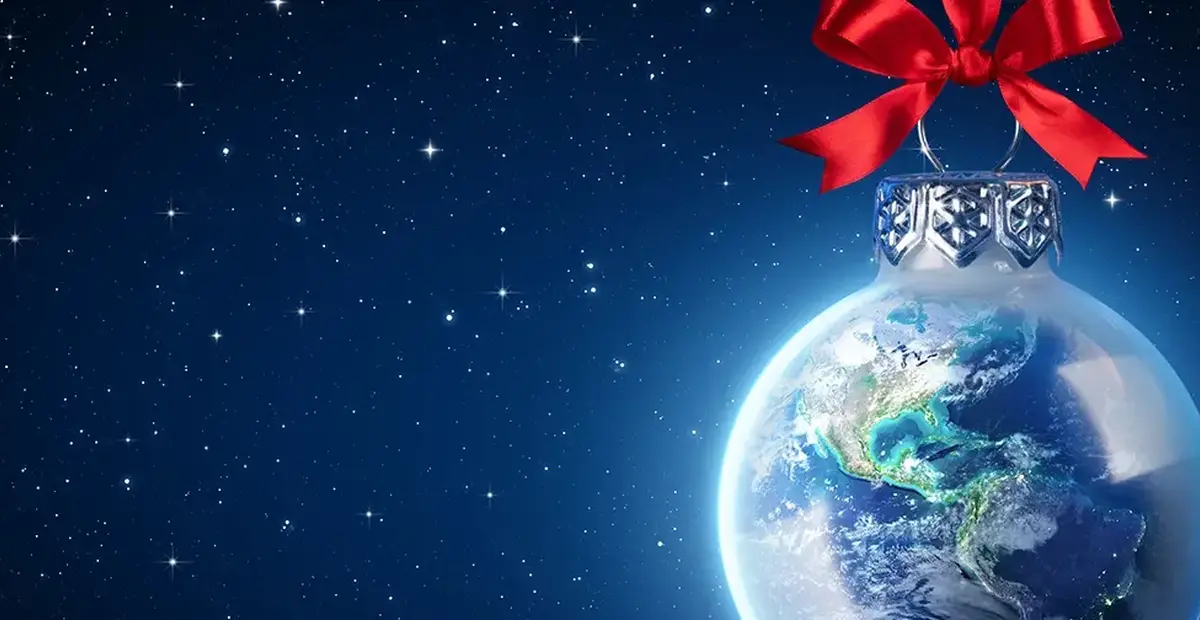People have chosen the end of the year as a special time for honoring, celebrating and giving, and they’ve been doing it for a long time. For thousands of years, people have revered this time of year for a variety of reasons and with distinctive flairs in every culture. Celebration and ceremony continues today all over the world from Christmas, Hanukkah, and Kwanzaa to more specialized solstice happenings, such as Dong Zhi in China, Shab-e Yalda in Iran, and Shalako in the American Southwest.
Over the years, countless traditions have become part of the celebrations, too. It’s these traditions that give holiday celebrations their personality, whether they are simply ornamental fun or symbols of deeper meaning. Here are a few from our more common holidays.
Christmas
Trees
One day during the Christmas season in Germany in the early 1600s, someone chopped down a pine tree, brought it inside, and decorated it. People apparently loved the idea, and the tradition caught on, though it was slow to take hold in the United States because it was seen as a pagan relic. Today, the Christmas tree is probably one of the most notable symbols of the Christmas season. Now people strap them to car roofs and rush them home, and it’s where everyone goes to give and receive presents.
Books
For a several-week time span in the late fall in Iceland, publishers release a lot of books, and people buy them at a furious pace. It’s called the Christmas Book Flood, and Icelanders crowd the local bookstores seeking to extend their personal libraries. This massive book drive is also closely related to the tradition of giving books to one another on Christmas Eve. Icelanders then spend the evening reading while waiting for old St. Nick.
Sweaters
It would not be right to overlook the great Yule tradition of donning Christmas sweaters in holiday competition to determine who has the most obnoxious outfit. This American tradition has quite a following as a cultural trend, though it lacks the venerable pedigree of the Christmas tree or caroling. To take part, all one needs are like-minded people and a red or green sweater excessively embroidered with Christmas symbols.
Hanukkah
Menorah
Hanukkah is known as the Festival of Lights, and lasts for eight days. It honors the reclaiming of a Jewish temple from the Greeks about 2200 years ago. After reclaiming the temple, the people sought to light a menorah. They discovered, however, that only about one day’s worth of oil was at hand. But to everyone’s amazement, they got eight days of oil from the lamp. Since then, people who celebrate Hanukkah keep a menorah, a special candleholder, and light it each night of Hanukkah. On day one, they light one candle; on day two, they light two candles; they continue until the eighth night when all eight candles blaze.
Food
Because of the significance of oil in the temple lamp, cooking foods in oil is an important tradition at Hanukkah. Tables overflow with fried indulgence, such as potato latkes and jelly donuts. Dairy foods are significant as well in honor of Judith, so cheesecake and blintzes are not an unusual sight.
Gelt
Jewish tradition included giving money, rather than presents, at Hanukkah. Today people can still expect to see some money during Hanukkah, but they also might see another kind of currency: chocolate gelt, or chocolate coins wrapped in foil.
Kwanzaa
Principles
Relatively new to the end-of-year-celebrations, Kwanzaa sets it foundation in a desire to bring African Americans together in community. The holiday derived from a collection of traditional African harvest celebrations, and it involves storytelling, poetry, feasting and candle lighting. Kwanzaa candle lighting is similar to Hanukkah candle lighting. For Kwanzaa, people light seven candles, each corresponding to the seven principles (ideals to honor). As a candle is lit each night of Kwanzaa, people discuss one of the principles.
Feast
The sixth day of Kwanzaa brings the people together for feasting. This tradition begins with an artistic performance. Next, a ritual drinking ceremony takes place followed by a reading and drum performance. Then people eat. After the feast, the host or hostess provides a farewell speech.



